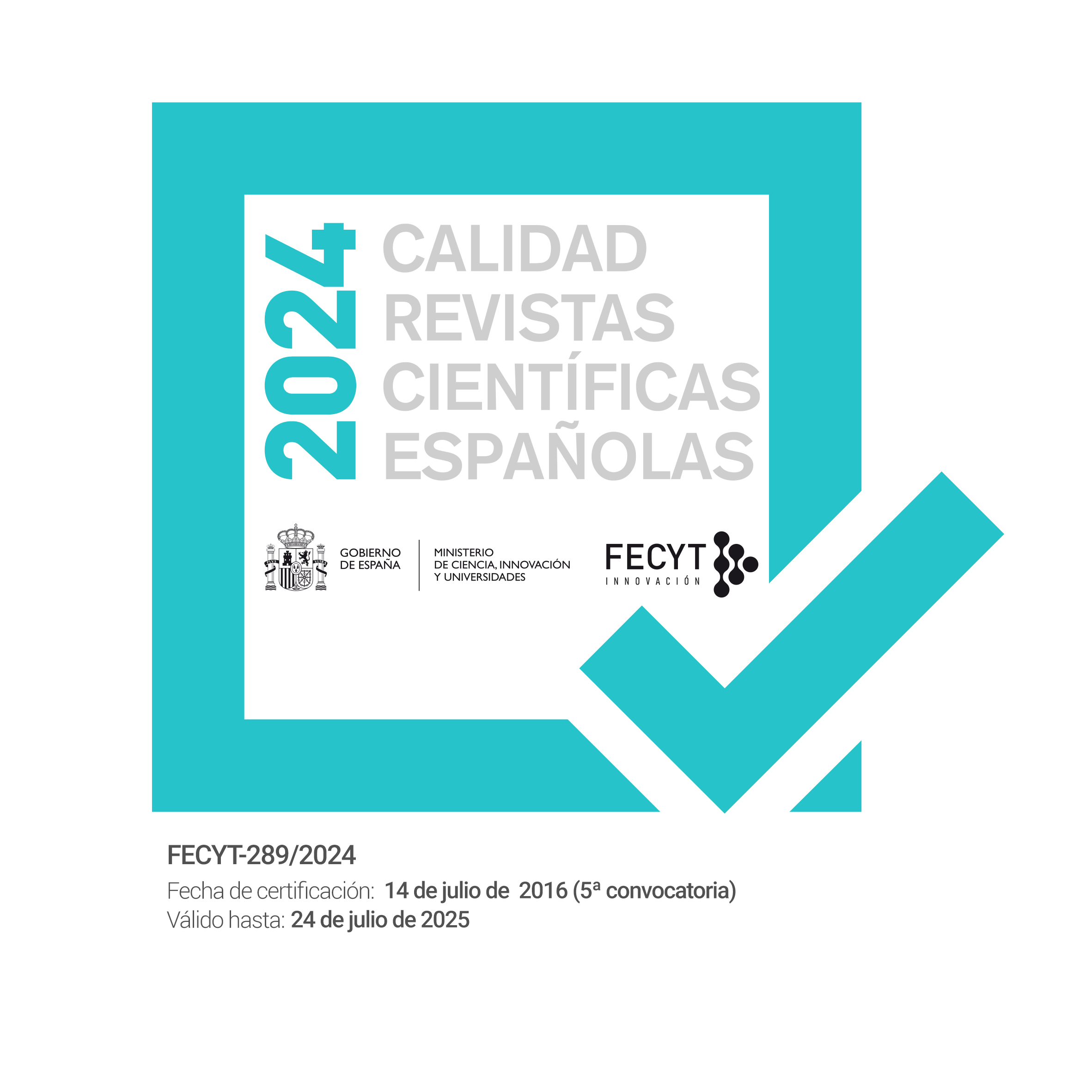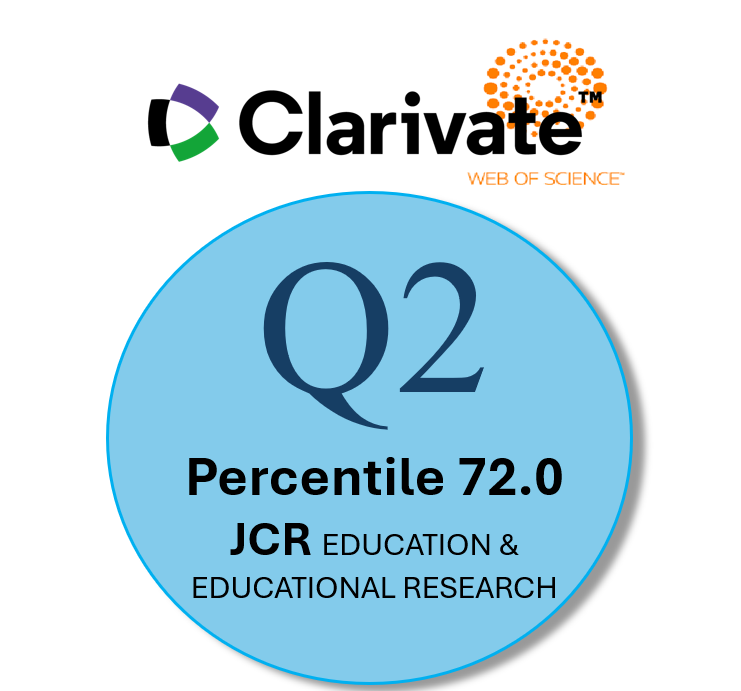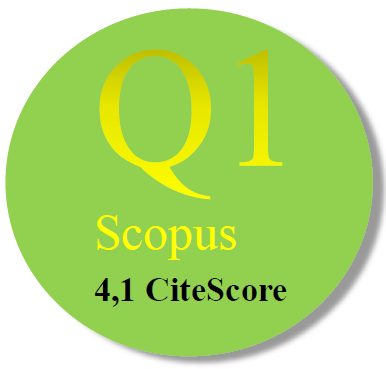Coding to learn Mathematics in 5th grade: implementation of the ScratchMaths project in Spain
Supporting Agencies
- National Institute of Educational Technologies and Teacher Training (INTEF) and the National University of Distance Education (UNED)
Abstract
This article presents the results of an investigation that has measured the causal impact of the intervention carried out within the framework of the School of Computational Thinking project, launched by the Ministry of Education and Vocational Training of Spain in the 2018-2019 academic year. Specifically, the work studies whether it is possible to improve the development of students’ mathematical competence through programming activities using the Scratch language in 5th grade of Primary Education. The research design consists of an empirical intervention study based on the lessons learned from the ScratchMaths project, developed by University College London in the United Kingdom. Two groups of non-equivalent students have been used, the experimental group and the control group, without random assignment, with pre-test and post-test measurement on the mathematical competence variable. More than 3,700 students participated in the investigation, who were assigned either to the experimental group -which worked on the mathematical competence through computer programming activities- or to the control group -which did so with other common activities and resources in the area of Mathematics. The results show that the students in the experimental group developed this competence to a greater extent than the students in the control group, with a significant and positive impact on it. Being the intervention effect size d=0.449, it can be stated that the project achieved the intended effect on the students’ mathematical competence. The generalization of computational thinking experiences in the curriculum can guarantee the improvement of the quality of the teaching and learning processes.
Downloads
References
Alsina, A., García, M., & Torrent, E. (2019). La evaluación de la competencia matemática desde la escuela y para la escuela. UNIÓN. Revista Iberoamericana de Educación Matemática, 55, 85-108.
Battista, M. T., & Clements, D. H. (1988). A case for a Logo-based elementary school geometry curriculum. Arithmetic Teacher, 36(3), 11-17. https://doi.org/10.5951/AT.36.3.0011
Benton, L., Hoyles, C., Kalas, I., & Noss, R. (2016). Building mathematical knowledge with programming: insights from the ScratchMaths project. In Constructionism in Action 2016: Conference Proceedings (pp. 26-33). Suksapattana Foundation: Thung Khru, Thailand.
Bocconi, S., Chioccariello, A., Dettori, G., Ferrari, A., & Engelhardt, K. (2016). Developing computational thinking in compulsory education-Implications for policy and practice (No. JRC104188). Joint Research Centre (Seville site).
Bocconi, S., Chioccariello, A., Dettori, G., Ferrari, A., Engelhardt, K., Kampylis, P., & Punie, Y. (2016). Exploring the field of computational thinking as a 21st century skill. Proceedings of the EDULEARN16, 16, 4725-4733.
Bocconi, S., Chioccariello, A., & Earp, J. (2018). The Nordic approach to introducing Computational Thinking and programming in compulsory education. Report prepared for the Nordic@ BETT2018 Steering Group.
Boylan, M., Demack, S., Wolstenholme, C., Reidy, J., & Reaney, S. (2018). ScratchMaths: evaluation report and executive summary. Education Endownment Foundation.
Briceño, O. L., Duarte, J. E., & Fernández, F. H. (2019). Diseño didáctico para el desarrollo de destrezas básicas de programación por medio del programa Scratch a estudiantes del grado quinto del Colegio Seminario Diocesano de Duitama. Revista Colombiana de Tecnologías de Avanzada, 2(34), 180-190. https://doi.org/10.24054/16927257.v34.n34.2019.4006
Campbell, P. F. (1987). Measuring distance: Children’s use of number and unit. Final report submitted to the National Institute of Mental Health Under the ADAMHA Small Grant Award Program. Grant No. MSMA, 1, R03.
Clements, D. H. (1999). The future of educational computing research: The case of computer programming. Information Technology in Childhood Education Annual, 1, 147-179.
Clements, D. H., & Battista, M. T. (1989). Learning of geometric concepts in a Logo environment. Journal for Research in Mathematics Education, 20(5), 450-467. https://doi.org/10.2307/749420
Cohen, J. (1988). Statistical power analysis for the behavioral sciences (2nd edition). Hillsdale, NJ: Erlbaum.
Cohen, L., Manion, L., & Morrison, K. (2007). Research methods in education. New York: Routledge.
Comisión Europea (2018). Comunicación de la Comisión al Parlamento Europeo, al Consejo, al Comité Económico y Social Europeo y al Comité de las Regiones sobre el Plan de Acción de Educación Digital. Bruselas: Comisión Europea.
Durango-Warnes, C., & Ravelo-Méndez, R. E. (2020). Beneficios del programa Scratch para potenciar el aprendizaje significativo de las Matemáticas en tercero de Primaria. Trilogía Ciencia Tecnología Sociedad, 12(23), 163-186. https://doi.org/10.22430/21457778.1524
Fanelli, D. (2012). Negative results are disappearing from most disciplines and countries. Scientometrics, 90(3), 891-904.
Fagerlund, J., Häkkinen, P., Vesisenaho, M., & Viiri, J. (2020). Computational thinking in programming with Scratch in primary schools: A systematic review. Comput Appl Eng Educ., 2020, 1-17. https://doi.org/10.1002/cae.22255
García-Perales, R. (2014). Diseño y validación de un instrumento de evaluación de la competencia matemática: rendimiento matemático de los alumnos más capaces [Tesis Doctoral]. Madrid: UNED.
García-Perales, R., & Jiménez, C. (2016). Diagnóstico de la competencia matemática de los alumnos más capaces. Revista de Investigación Educativa, 34(1), 205-219. https://doi.org/10.6018/rie.34.1.218521
García-Perales, R., Jiménez, C., & Palomares, A. (2020). Seguimiento de un grupo de alumnos y alumnas con alta capacidad matemática. Revista de Investigación Educativa, 38(2), 415-434. doi: http://dx.doi.org/10.6018/rie.366541
Hamada, R. M. (1986) The relationship between learning Logo and proficiency in mathematics. (Tesis Doctoral, Columbia University).
Hattie, J. (2009). Visible learning. New York: Routledge.
Hayes, J. R., Young, R. E., Matchett, M. L., McCaffrey, M., & Cochran, C. (Eds.). (2020). Reading empirical research studies: The rhetoric of research. New York: Routledge.
Instituto Nacional de Tecnologías Educativas y de Formación del Profesorado, INTEF (2018). Programación, robótica y pensamiento computacional en el aula - Situación en España y propuesta normativa. Madrid: Ministerio de Educación y Formación Profesional.
Instituto Nacional de Tecnologías Educativas y de Formación del Profesorado, INTEF (2019). La Escuela de pensamiento computacional y su impacto en el aprendizaje. Curso escolar 2018-2019. Madrid: Ministerio de Educación y Formación Profesional.
Jiménez, C., & García-Perales, R. (2013). Los alumnos más capaces en España. Normativa e incidencia en el diagnóstico y la educación. Revista Española de Orientación y Psicopedagogía, 24(1), 7-24. https://doi.org/10.5944/reop.vol.24.num.1.2013.11267
Johnson-Gentile, K., Clements, D. H., & Battista, M. T. (1994). Effects of computer and noncomputer environments on students' conceptualizations of geometric motions. Journal of Educational Computing Research, 11(2), 121-140. https://doi.org/10.2190/49EE-8PXL-YY8C-A923
Li, Y., Schoenfeld, A. H., diSessa, A. A., Graesser, A. C., Benson, L. C., English, L. D., Duschl, R. A. (2020). Computational Thinking Is More about Thinking than Computing. Journal for STEM Education Research, 3, 1-18. https://doi.org/10.1007/s41979-020-00030-2
Maloney, J., Resnick, M., Rusk, N., Silverman, B., & Eastmond, E. (2010). The scratch programming language and environment. ACM Transactions on Computing Education (TOCE), 10(4), 1-15. http://doi.acm.org/10.1145/1868358.1868363
Malott, C. (2020). The Sublation of Digital Education. Postdigital Science and Education, 2, 365-379. https://doi.org/10.1007/s42438-019-00083-6
Meerbaum-Salant, O., Armoni, M., & Ben-Ari, M. (2013). Learning computer science concepts with scratch. Computer Science Education, 23(3), 239-264. https://doi.org/10.1145/1839594.1839607
Ministerio de Educación y Formación Profesional (2019). PISA 2018 Programa para la Evaluación Internacional de los Estudiantes. Informe español. Madrid: Ministerio de y Formación Profesional.
Mohaghegh, D. M., & McCauley, M. (2016). Computational thinking: The skill set of the 21st century. International Journal of Computer Science and Information Technologies, 7(3), 1524-1530.
Moreno-León, J., & Robles, G. (2015). Computer programming as an educational tool in the English classroom: a preliminary study. In 2015 IEEE Global Engineering Education Conference (EDUCON) (pp. 961-966). IEEE.
Moreno-León, J., & Robles, G. (2016). Code to learn with Scratch? A systematic literature review. In 2016 IEEE Global Engineering Education Conference (EDUCON) (pp. 150-156). IEEE.
Moreno-León, J., Robles, G., & Román-González, M. (2016). Code to learn: Where does it belong in the K-12 curriculum. Journal of Information Technology Education: Research, 15, 283-303. https://doi.org/10.28945/3521
Moreno-León, J., Robles, G., Román-González, M., & Rodríguez, J. D. (2019). Not the same: a text network analysis on computational thinking definitions to study its relationship with computer programming. Revista Interuniversitaria de Investigación en Tecnología Educativa, 7, 26-35. https://doi.org/10.6018/riite.397151
Morris, S. B. (2007). Estimating Effect Sizes from Pretest-Posttest-Control Group Designs. Organizational Research Methods, 11(2), 364-386. https://doi.org/10.1177/1094428106291059
Noss, R., Hoyles, C., Saunders, P., Clark-Wilson, A., Benton, L., & Kalas, I. (2020). Constructionism can work: the story of ScratchMaths. MIT Press.
Olive, J. (1991). LOGO programming and geometric understanding: An in-depth study. Journal for Research in Mathematics Education, 22(2), 90-111. https://doi.org/10.5951/jresematheduc.22.2.0090
Organisation for Economic Co-operation and Development (2018). PISA 2021 Mathematics Framework (Draft). Recuperado de https://cutt.ly/lhYve27
Papert, S. (1980). Mindstorms: Children, computers, and powerful ideas. Basic Books, Inc.
Papert, S., & Solomon, C. (1972). Twenty Things to Do with a Computer. Educational Technology, 12(4), 9-18. Recuperado de https://eric.ed.gov/?id=EJ062142
Santillán, J. P., Cadena, V. C., & Cadena, M. (2019). Educación Steam: entrada a la sociedad del conocimiento. Ciencia Digital, 3(34), 212-227. doi: https://doi.org/10.33262/cienciadigital.v3i3.4.847
Sierra-Rodríguez, J. L., & García-Peñalvo, F. J. (2015). Informática Educativa y Educación en Informática. Education in the Knowledge Society (EKS), 16(4), 25-31. doi: http://dx.doi.org/10.14201/eks20151642531
Watt, M. (1982). What is Logo? Creative Computing, 8(10), 112-29.
Weintrop, D., & Wilensky, U. (2015). To block or not to block, that is the question: Students' perceptions of blocks-based programming. Proceedings of the 14th International Conference on Interaction Design and Children (pp 199-208). Medford, MA, USA: ACM. http://dx.doi.org/10.1145/2771839.2771860
Wing, J. M. (2006). Computational thinking. Communications of the ACM, 49(3), 33-35.
Van Dijk, J. (2020). The Digital Divide. Cambrigde, UK: Polity Press.
Voogt, J., Fisser, P., Good, J., Mishra, P., & Yadav, A. (2015). Computational thinking in compulsory education: Towards an agenda for research and practice. Education and Information Technologies, 20(4), 715-728. https://doi.org/10.1007/s10639-015-9412-6
Copyright (c) 2021 Distance Education Journal

This work is licensed under a Creative Commons Attribution-NonCommercial 4.0 International License.
Las obras que se publican en esta revista están sujetas a los siguientes términos:
1. El Servicio de Publicaciones de la Universidad de Murcia (la editorial) conserva los derechos patrimoniales (copyright) de las obras publicadas, y favorece y permite la reutilización de las mismas bajo la licencia de uso indicada en el punto 2.
2. Las obras se publican en la edición electrónica de la revista bajo una licencia Creative Commons Reconocimiento-NoComercial-SinObraDerivada 3.0 España (texto legal). Se pueden copiar, usar, difundir, transmitir y exponer públicamente, siempre que: i) se cite la autoría y la fuente original de su publicación (revista, editorial y URL de la obra); ii) no se usen para fines comerciales; iii) se mencione la existencia y especificaciones de esta licencia de uso.
3. Condiciones de auto-archivo. Se permite y se anima a los autores a difundir electrónicamente las versiones pre-print (versión antes de ser evaluada) y/o post-print (versión evaluada y aceptada para su publicación) de sus obras antes de su publicación, ya que favorece su circulación y difusión más temprana y con ello un posible aumento en su citación y alcance entre la comunidad académica. Color RoMEO: verde.














